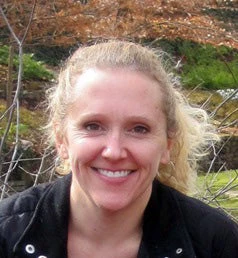In April 2013, the World Bank Group endorsed two ambitious goals: (1) to end extreme poverty by 2030, and; (2) to promote “shared prosperity” by boosting the incomes of the poorest 40 percent of the population in every country. The introduction of the second goal marked a shift in the World Bank Group’s poverty reduction mission. Some might consider the goal #2 to constitute a refinement of a longer-standing -- albeit implicit -- emphasis on growth, widely considered a necessary condition for poverty reduction.
Is goal #1, ending extreme poverty by 2030, paramount and is goal #2 subsidiary to that first objective? On the other hand, if these two goals are prioritized equally, what might this mean for the extreme poor? What are the trade-offs between boosting the incomes of the bottom 40 percent in every developing country and ending extreme poverty globally?
A recent Inequality In Focus article, “Ending Extreme Poverty and Promoting Shared Prosperity: Could There Be Trade-offs Between These Two Goals?” by me, Pedro Olinto, Carlos Sobrado, Hiroki Uematsu, and Yeon Soo Kim with Maximillian Ashwill looks at some basic characteristics of the extreme poor as well as of the bottom 40 percent of income earners. We use new data drawn from the most recent national household surveys. We examine five groups of countries: India, China, Low Income Countries (LICs), Lower Middle Income Countries without India (LMICs), and Upper Middle Income Countries without China (UMICs). We start by exploring the distribution across country groupings of 1.2 billion extremely poor people plus the people in the bottom 40% not already captured in the extreme poor definition. This amounts to 1.3 billion non-poor people in the bottom 40 percent. Compared to a focus only on the extreme poor, targeting the combined group of extreme poor and bottom 40% shifts the distribution from LICs and India, and towards UMICs and China (See Figure).
Understanding the characteristics of these groups is revealing. Agriculture is the main income source for both the extreme poor and the bottom 40% -- except in UMICs. For these countries, the shared prosperity focus implies less emphasis on farming livelihoods. Across the five country groupings, there is a larger share of children (under 13) among the extreme poor than the bottom 40%. That is, shared prosperity as a global target shifts the focus to a comparatively older target population. Turning to access to electricity, for UMICs and China, the two populations have similar access. But for India, LMICs and LICs, the extreme poor are less likely to have access to electricity.
Where will these goals take us?
An agenda to end extreme poverty might be unlikely to be impacted by the new goal in low-income/high-poverty countries such as Nigeria and Bangladesh, where more than 40 percent of the population is extremely poor. In those countries and others like them, promoting shared prosperity may work to re-focus attention on the poorest segments of the population, because the bottom 40 percent are often poorer than the average poor person. The story is different for China and the UMICs such as Brazil, Mexico, and Russia. In those countries, the introduction of the shared prosperity goal substantially expands the World Bank Group’s target population.
Because the extremely poor are a very small, and shrinking, minority in these countries, a refocusing of the development dialogue away from ending poverty and toward boosting the income of the bottom 40 percent may weaken the political willingness to end extreme poverty. Only 4 percent of the world’s extremely poor people reside in UMICs, but they still represent a large share of the world’s population—approximately 45 million people.
To end extreme poverty by 2030, the World Bank Group and international development community need to be explicit in how they prioritize the two goals. If it is made clear that gains in shared prosperity will be celebrated only if we are on track to end extreme poverty by 2030, then the addition to the World Bank Group’s target population of 1.3 billion people noted above, should not detract from the efforts to lift out of poverty the 1.2 billion people currently living on less than $1.25 per day. However, if an increase in the incomes of the bottom 40 percent in every country is seen as a substitute for progress in reducing extreme poverty, then the introduction of the second goal might work against the world’s poorest people.


Join the Conversation